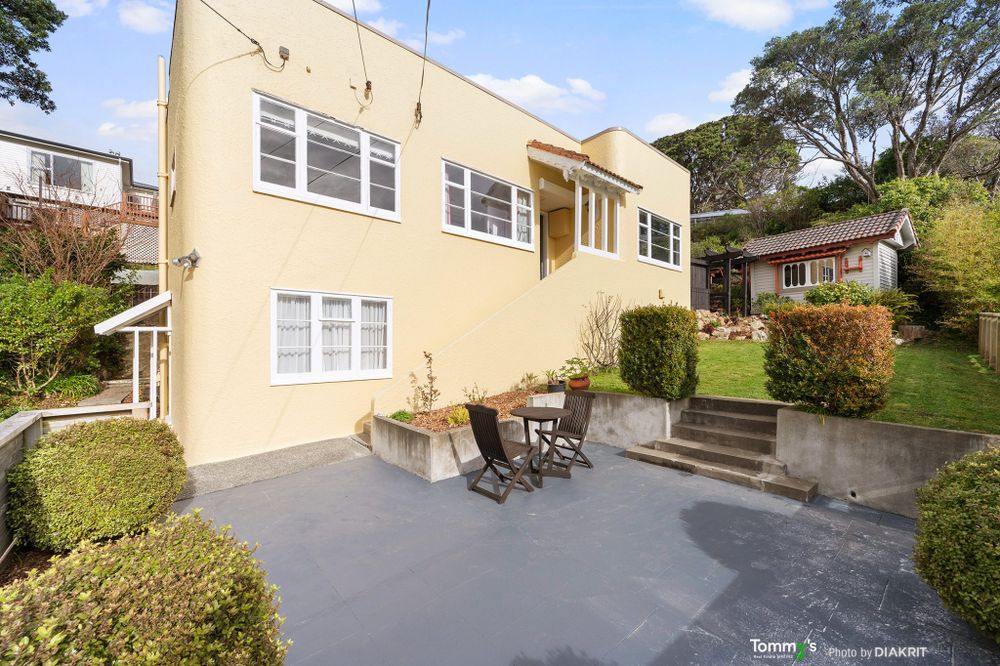Art Deco
History: The arrival of the Art Deco housing style in the 1930s marked a significant shift from the ornate Victorian and Edwardian villas of the early 20th century and the more casual bungalows of the 1920s. Based on European modernist principles that emphasized revealing the building’s structure rather than disguising it, the Art Deco style became popular following the 1925 ‘Exposition Internationale des Arts Decoratifs et Industriels Modernes’ in Paris. This style, also known as ‘moderne’ in New Zealand, emphasized functionality and was characterized by smooth surfaces, large glass areas, steel framing, and cubic forms with minimal decoration.

Typical Features: Art Deco houses featured distinctive elements such as parapet walls, flat roofs not visible from the street, stucco cladding, rounded corners, windows and doors without external facing boards, and minimal external decoration. Common decorative motifs included chevrons, zig-zags, and horizontal or vertical bands. Shallow recessed porches with flat projecting canopies were also typical.
Locations: The most famous concentration of Art Deco architecture in New Zealand is in Napier, rebuilt extensively in this style following the 1931 earthquake. While much of Napier’s Art Deco construction is commercial, significant numbers of Art Deco houses can also be found in areas of Auckland, Hastings, Wellington, and Lower Hutt, as well as Timaru, Dunedin, and Invercargill in the South Island. Almost all towns have some Art Deco dwellings, with regional variations such as brick houses in Huntly and bevel-back timber weatherboard houses in other areas.
Modifications: Many Art Deco houses have undergone repairs or significant renovations due to weathertightness issues and the lack of insulation common to the period. Original features are often preserved to maintain the heritage value of these homes. However, modern upgrades are necessary to improve living conditions.
Current State: Art Deco houses are valued for their unique character and heritage. Many have planning protections to preserve their style, though they often require significant renovations to meet modern standards of energy efficiency and comfort. Despite challenges, Art Deco homes remain cherished for their historical significance and distinctive architectural features.
